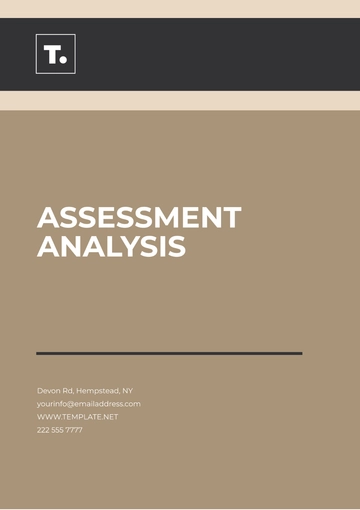Free Historical Analysis Essay Outline

Author: [Your Name]
Date: October, 2050
Introduction
The introduction sets the stage for a comprehensive exploration of a particular historical event, period, or figure. It should provide the reader with a context that highlights the significance of the study. For instance, if analyzing the American Civil War, the introduction may touch on the socio-economic conditions leading up to the war, highlighting the prevailing ideological divides. The thesis statement here will clearly articulate the main argument or perspective that the essay will support, such as the assertion that the Civil War was primarily a struggle over states' rights versus federal authority.
Body Paragraph 1
Economic Factors
This section should delve into the economic background and its influence on the historical event in question. For example, when discussing the American Civil War, one might explore how the industrial North's economic demands contrasted sharply with the agrarian South’s reliance on slavery. The analysis should include evidence from primary sources, such as contemporary letters or economic data, underscoring how these economic disparities led to mounting tensions. The paragraph should effectively illustrate how these economic factors were pivotal in shaping the historical narrative.
Body Paragraph 2
Social and Cultural Influences
In this section, focus on the social and cultural dimensions that played a critical role. Continuing with the Civil War example, an analysis of abolitionist movements and Southern cultural identity would be pertinent. Examine how cultural values and social ideologies contributed to the conflict, emphasizing key figures and movements that stirred social consciousness. Quotes from speeches or literature from the period can serve as compelling evidence of how deeply entrenched beliefs shaped societal responses to the evolving political climate.
Body Paragraph 3
Political Dynamics
Analyze the political landscape and the decisions that led to the historical event. This could include a discussion of the legislative acts, key political figures, and debates that fueled the conflict. In the instance of the Civil War, an examination of the Dred Scott Decision, the election of Abraham Lincoln, and the succession of Southern states would be crucial. The paragraph should connect these political elements with the broader historical thesis, proving how they culminated in the event's occurrence.
Conclusion
The conclusion synthesizes the essay's findings, reiterating the thesis in light of the evidence presented. It should offer a concise summary of the economic, social, and political analyses conducted and reflect on the broader implications of the historical event. This section may also suggest areas for further research, acknowledging the complexities of historical interpretation. In closing, the essay should leave the reader with a clearer understanding of the event's significance and its enduring legacy in historical memory.
- 100% Customizable, free editor
- Access 1 Million+ Templates, photo’s & graphics
- Download or share as a template
- Click and replace photos, graphics, text, backgrounds
- Resize, crop, AI write & more
- Access advanced editor
Organize your historical analysis with ease using the Historical Analysis Essay Outline Template from Template.net. This fully editable and customizable template helps you structure arguments, evidence, and interpretations seamlessly. Editable in our AI Editor Tool, this resource is perfect for academic or research purposes. Download and print this professional-grade template to elevate your historical writing today.





























